Critical pedagogy in education focuses on empowering students through active engagement and critical thinking. Methods such as problem-posing education and dialogical learning significantly alter the traditional classroom dynamic, encouraging students to collaborate and take ownership of their learning.
Student-centered environments not only promote teamwork but also enhance personal agency, allowing learners to connect their experiences to their education. Culturally relevant pedagogy plays a vital role in fostering inclusivity by relating lessons to students’ diverse backgrounds, making learning more relevant and impactful.
Experiential learning and community-based projects serve as powerful tools for driving social change. These approaches allow students to apply their knowledge in real-world contexts, bridging the gap between theory and practice.
Understanding these components is crucial for recognizing education’s potential as a transformative force. Exploring how these methods affect student outcomes can lead to more effective teaching strategies and a deeper appreciation for the role of education in societal development.
Freire’s Banking Model Critique
In education, many students encounter what Paulo Freire describes as the “banking model.” This approach involves a one-sided dynamic where students passively absorb information from teachers, lacking the opportunity for critical engagement with the material. Instead of fostering individual understanding, this model treats students as mere containers for facts.
As a result, students often feel disconnected, memorizing information without truly learning or connecting with it. This situation goes beyond simple knowledge acquisition; it impacts the sense of belonging within the educational setting.
Freire criticizes this method for suppressing critical consciousness—the ability to analyze and question the world around you. When trapped in the banking model, students miss out on the opportunity to think deeply about significant issues affecting themselves and their communities. This passive role can lead to feelings of isolation and dissatisfaction.
Challenging this model is essential for personal and academic growth. Seeking ways to engage, question, and reflect helps break the cycle of passivity.
Developing critical consciousness not only enhances the educational experience but also fosters meaningful connections with classmates and teachers. This engagement cultivates a sense of belonging that enriches both learning and individual development.
Problem-Posing Education
Problem-posing education presents a dynamic shift from traditional learning models, emphasizing active participation rather than passive reception of knowledge. This approach invites learners to engage directly with their surroundings, collaborating with peers and educators to confront relevant real-world challenges impacting their lives and communities.
It transforms education into a communal experience, fostering a sense of belonging and shared purpose. Reflective practice is a cornerstone of problem-posing education, encouraging learners to continually assess their thoughts and actions. This ongoing evaluation cultivates a profound understanding and personal development.
As learners question their assumptions and consider various viewpoints, they enhance their critical thinking abilities, empowering them to challenge societal norms effectively. This educational model transcends mere knowledge acquisition; it reshapes one’s perception of the world.
Participants recognize their role as active contributors to the learning process rather than passive recipients. Engaging with issues that resonate with their experiences creates a stronger bond within the learning community, reinforcing the belief that education is a collaborative effort.
Adopting problem-posing education can profoundly alter perspectives and motivate individuals to become catalysts for change in their own lives and the lives of others.
Dialogical Learning Approaches
Dialogical learning approaches emphasize the importance of engaging in meaningful discussions with your teacher. This type of interaction promotes collaboration and the co-creation of knowledge, which enhances your understanding of the subject matter.
Furthermore, it sharpens your critical thinking abilities. Working together allows you to question concepts and broaden your viewpoints within a supportive setting.
These conversations are vital because they help you not only grasp complex ideas but also develop skills that are essential for academic and personal growth.
Student-Teacher Collaboration
Collaboration between students and teachers creates a dynamic learning atmosphere where both parties actively participate. Engaging in meaningful discussions fosters a sense of belonging, enhancing the overall educational experience. This partnership manifests in various ways, such as group projects that leverage individual strengths and peer feedback sessions that encourage personal growth and understanding.
In collaborative settings, students take on an active role in their education. They express their thoughts, ask questions, and share their ideas, transforming the classroom into a lively environment for discovery. Working together on projects builds trust and respect, leading to stronger connections with the subject matter and each other.
Peer feedback is particularly valuable for development. As students exchange constructive criticism, they learn to appreciate different viewpoints while sharpening their critical thinking abilities. This ongoing cycle of collaboration and feedback fosters a community where everyone feels important and empowered.
Embrace these collaborative opportunities, as they reveal that learning is a collective journey, rich with insights and creativity.
Shared Knowledge Creation
Shared knowledge creation is an essential component of modern education, emphasizing the collaborative relationship between students and teachers. This interactive process engages learners in dialogical learning approaches, which enhance their educational experience.
Through active participation in discussions and reflection on personal experiences, students contribute to co-constructing knowledge, fostering a strong sense of community within their learning environment.
The concept of shared knowledge creation involves three key elements:
- Open Dialogue: Students are invited to articulate their ideas while also valuing the insights of others. This creates an inclusive atmosphere where varied viewpoints are appreciated and explored.
- Collaborative Projects: Working on group assignments allows students to collaborate with classmates, offering opportunities to deepen their understanding through shared activities and joint problem-solving efforts.
- Feedback Loops: Consistent feedback is vital for refining ideas and enriching comprehension. It ensures that each participant’s contributions are recognized, promoting a culture of continuous improvement and learning.
These elements collectively enhance the educational experience, making shared knowledge creation a critical focus for effective learning.
Critical Thinking Development
Critical thinking is a vital skill that enhances our ability to analyze information and make informed decisions. It flourishes in environments where dialogue and collaboration are encouraged. Engaging in discussions allows individuals to share their viewpoints while also actively listening to others, fostering an atmosphere where diverse perspectives are appreciated. This type of interaction not only promotes a sense of belonging but also enriches the learning experience.
Incorporating metacognitive strategies is essential for deeper understanding. Reflecting on your thought processes helps clarify how you form opinions. Consider questions such as, “What led me to this conclusion?” or “What evidence supports my stance?” These reflective practices enable you to critically assess your learning and the broader context of your ideas.
As you participate in conversations, your skills in analyzing, evaluating, and synthesizing information will improve significantly. You’ll begin to recognize the nuances and complexities inherent in many issues, which are crucial for effective critical thinking. With consistent practice, you’ll gain confidence in articulating your thoughts and questioning established beliefs.
In collaborative settings, you aren’t merely absorbing information; you’re cultivating essential skills to navigate life’s challenges. These experiences contribute to building a supportive community in which everyone can thrive together.
Culturally Relevant Pedagogy
Culturally relevant pedagogy focuses on linking classroom learning with the cultural backgrounds and experiences of students. This method creates an inclusive atmosphere, enhancing cultural responsiveness and ensuring that every student feels valued and understood. Connecting classroom content to students’ diverse experiences fosters a sense of belonging and engagement.
- Incorporate multicultural materials: Select books, music, and art from various cultures that reflect the identities of your students. This approach not only enhances the curriculum but also affirms their personal experiences. For instance, including literature by authors from different cultural backgrounds can provide students with relatable narratives.
- Encourage student voice: Facilitate opportunities for students to share their cultural stories and viewpoints during discussions. This practice nurtures a sense of community and promotes mutual learning among peers, enhancing classroom dynamics.
- Adapt teaching methods: Utilize a variety of instructional strategies that accommodate different learning styles and cultural perspectives. This creates an environment where every student can thrive and actively participate. For example, incorporating group projects that allow collaborative learning can cater to diverse strengths and foster teamwork.
These strategies not only enrich the educational experience but also prepare students to thrive in a multicultural society.
Social Justice Education
Social Justice Education aims to develop a curriculum that’s equitable and inclusive, reflecting a wide range of perspectives. This approach prioritizes the empowerment of marginalized voices, ensuring they aren’t only acknowledged but also respected in the educational experience.
Such an environment promotes understanding and collaboration among all participants, creating a richer and more diverse learning atmosphere. For instance, incorporating literature and history from various cultural backgrounds can enhance students’ comprehension of social dynamics, making it essential for educators to actively seek out and include these narratives in their teaching.
This commitment to inclusivity ultimately benefits everyone involved, fostering a sense of belonging and mutual respect within the classroom.
Equity in Curriculum Design
Equity in curriculum design is crucial for fostering an educational environment that acknowledges and appreciates diverse viewpoints. This approach ensures that all students feel recognized and empowered throughout their learning experiences.
Here are three effective strategies to consider:
- Adaptive Strategies: Implement teaching methods that are flexible and cater to different learning styles. This allows each student to engage with the material in a way that resonates with them, enhancing their understanding and participation.
- Inclusive Resources: Choose materials that are diverse and culturally relevant, reflecting the varied backgrounds and experiences of all students. This not only raises awareness of biases but also cultivates a sense of belonging among learners.
- Equitable Assessments: Create assessments that fairly evaluate student comprehension and skills, ensuring that all students have an equal opportunity to showcase their knowledge. This promotes a more just evaluation process in the classroom.
Empowering Marginalized Voices
Empowering marginalized voices is a crucial aspect of creating an inclusive educational environment. When students feel their stories are valued, they’re more likely to engage in meaningful discussions about their identities and experiences.
Implementing storytelling workshops provides students with opportunities to articulate their lived realities, enhancing cultural representation and fostering mutual understanding among classmates.
Participating in community engagement activities enables students to learn from diverse perspectives, dismantling the power structures that often overshadow marginalized voices. Advocacy training plays a vital role in helping students develop self-advocacy skills, equipping them to champion their rights and the rights of others.
Sharing narratives fosters an atmosphere where every voice is acknowledged, nurturing empathy and collective support.
As you work on developing an inclusive curriculum, creating platforms for student expression is essential. Encourage students to take charge of their narratives and advocate for social justice.
Integrating such practices not only empowers marginalized voices but also nurtures a classroom culture that celebrates diversity. This approach enhances the educational experience and prepares students to actively contribute to a more equitable society.
Experiential Learning Practices
Experiential learning practices play a crucial role in enhancing understanding and engagement in education. These methods emphasize hands-on learning and real-world applications, creating immersive experiences that resonate with students. Such practices promote reflective thinking, enabling learners to relate theoretical concepts to their personal experiences.
Consider these three significant forms of experiential learning:
- Project-Based Learning: This method prompts students to engage with real-world challenges, enhancing critical thinking and teamwork abilities.
- Service Learning: Merging community service with classroom lessons helps students grasp the societal implications of their education, fostering a sense of community and accountability.
- Field Trips and Simulations: These activities allow students to interact directly with content, making learning more relevant and enjoyable.
Mentorship programs can further enrich these practices by linking students with professionals who offer guidance throughout their educational experiences.
Emphasizing experiential learning not only enhances your curriculum but also empowers students to take an active role in their education. Together, this approach cultivates a dynamic educational atmosphere that prioritizes collaboration and personal growth.
Critical Literacy Initiatives
Critical literacy initiatives focus on empowering students to analyze and question texts beyond superficial understanding. These programs foster deeper thinking about the media consumed, encouraging individuals to critically assess the messages conveyed through various formats. This includes traditional texts as well as digital content such as social media posts, advertisements, and news articles.
Engaging with diverse media forms enhances social media literacy, a vital skill in today’s digital landscape. This involves actively evaluating information instead of passively scrolling through feeds. Participants learn to recognize biases and motives behind the narratives that shape public perception, promoting advocacy for more inclusive and equitable representations.
These initiatives create a supportive environment for sharing ideas, challenging conventional views, and connecting with like-minded individuals. Engaging in these discussions not only strengthens personal voices but also builds a sense of community focused on critical thinking and social justice.
Embrace these opportunities to become informed and active participants in society.
Student-Centered Learning Environments
Student-centered learning environments focus on the individual needs and interests of students, creating engaging spaces that encourage active participation in the educational process.
These settings prioritize your voice and agency, allowing you to take charge of your learning journey rather than simply absorbing information.
Here are three significant advantages of student-centered learning environments:
- Active Engagement: You have the opportunity to ask questions, work collaboratively with classmates, and explore topics that matter to you. This level of engagement makes the learning experience not only relevant but also enjoyable.
- Personalized Feedback: Teachers in these environments offer specific feedback tailored to your unique learning style and requirements. This support promotes your growth and helps you progress at a pace that suits you.
- Flexible Learning Paths: You can choose how you prefer to learn, whether through hands-on projects, discussions, or other activities. This flexibility fosters a sense of belonging and encourages you to take responsibility for your educational experience.
Incorporating these elements enhances your academic journey and cultivates a supportive community, where everyone contributes to a rich learning environment.
Community-Based Learning Projects
Community-based learning projects offer a unique opportunity to engage with local issues and contribute to meaningful change. Through service learning, you actively address real challenges in your community, fostering a sense of connection and collaboration.
This approach not only enhances your understanding of the local environment but also builds strong partnerships that can lead to positive outcomes. Participating in these initiatives cultivates civic responsibility, as you work alongside others to drive progress.
Involvement in grassroots efforts or cultural exchange programs provides insight into diverse perspectives and encourages the sharing of experiences, promoting mutual understanding.
These projects allow you to apply your knowledge in practical ways that have a direct impact on your neighborhood. Rather than just learning theories, you engage in actions that matter.
Each project contributes to a supportive network that enriches your educational journey. Embracing community-based learning enables you to influence your surroundings while developing personally.
Conclusion
Critical pedagogy is a vital approach in education that promotes inclusivity and engagement in learning environments. It encourages the incorporation of diverse perspectives, which enhances students’ understanding and empathy. This method involves techniques such as problem-posing education, dialogical learning, and community-based projects. These strategies empower students to link theoretical knowledge with practical experiences, transforming them into active contributors to their communities. As a result, learners develop critical thinking skills that equip them to tackle real-world challenges with innovative solutions and confidence.

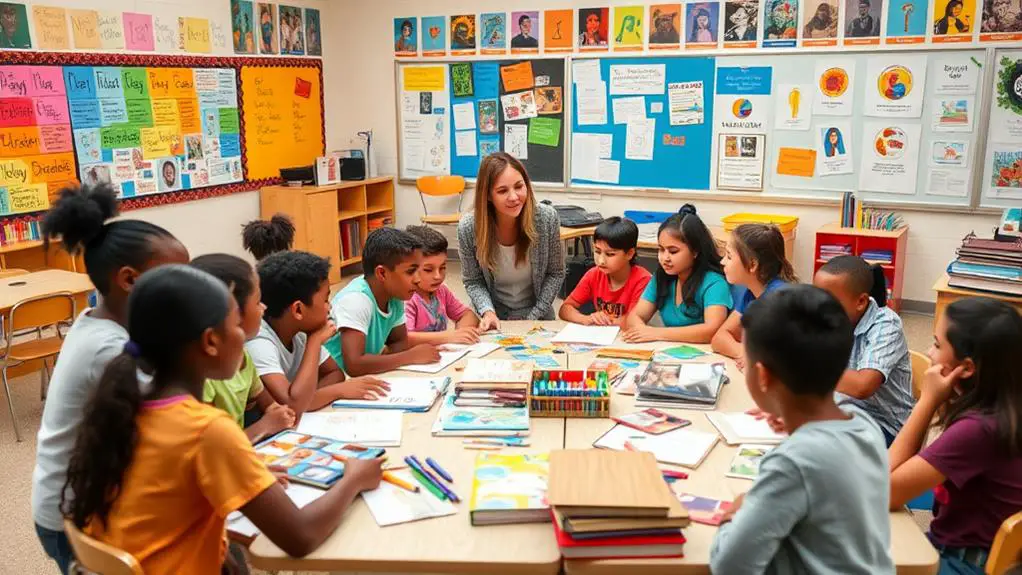
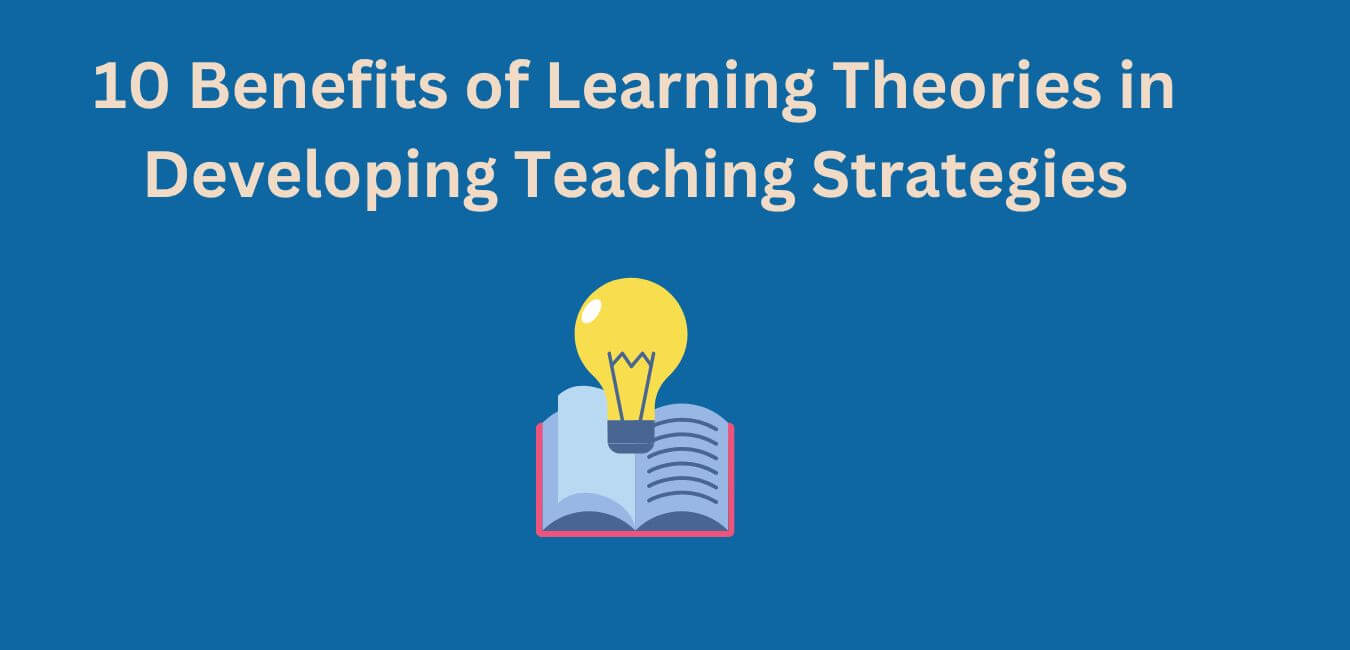
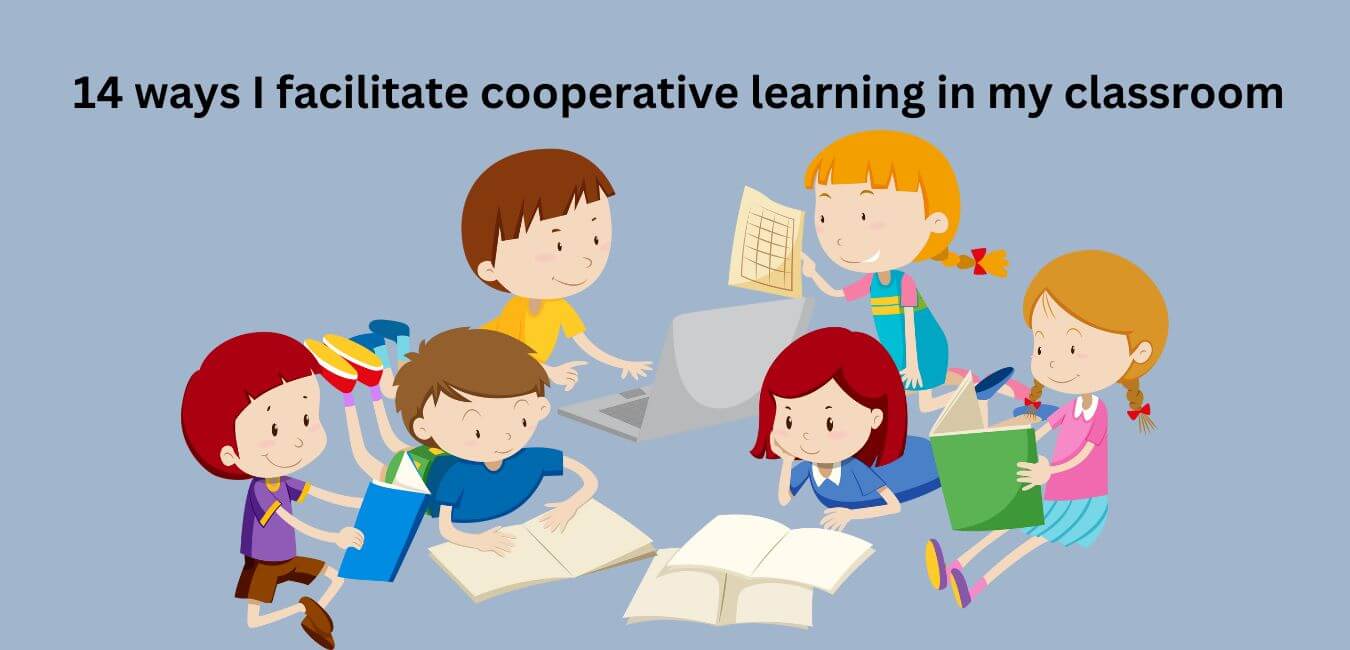
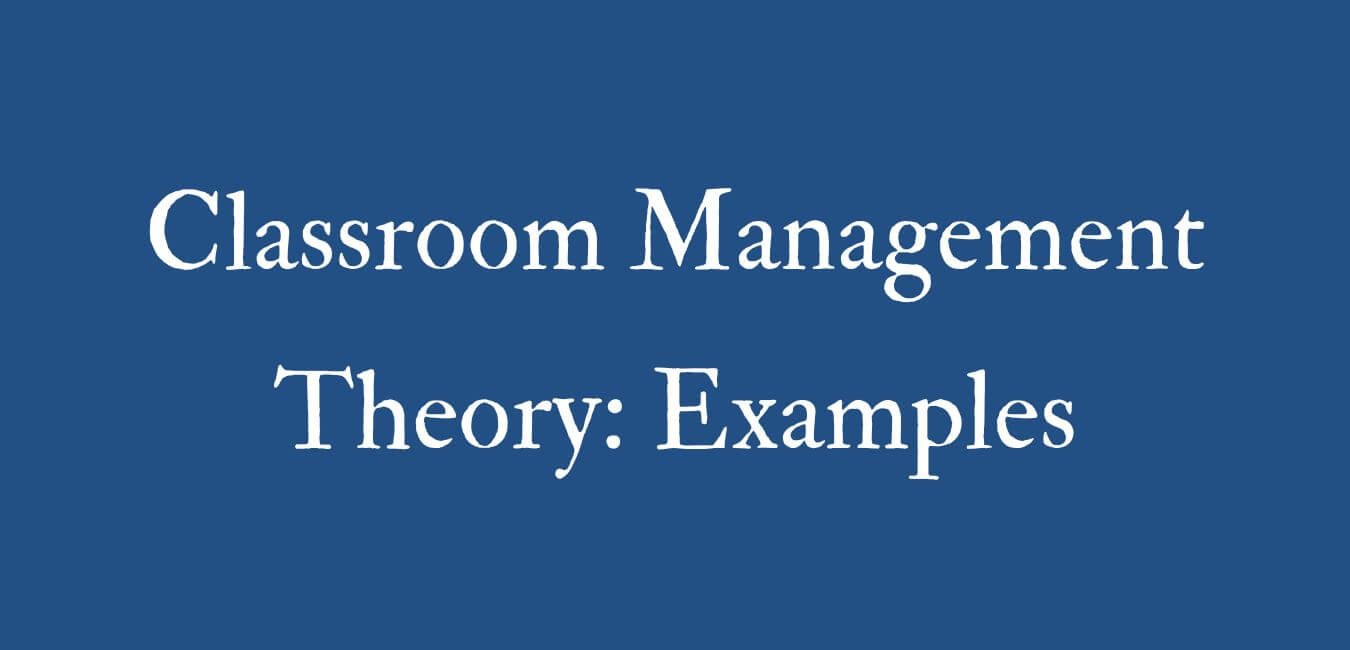
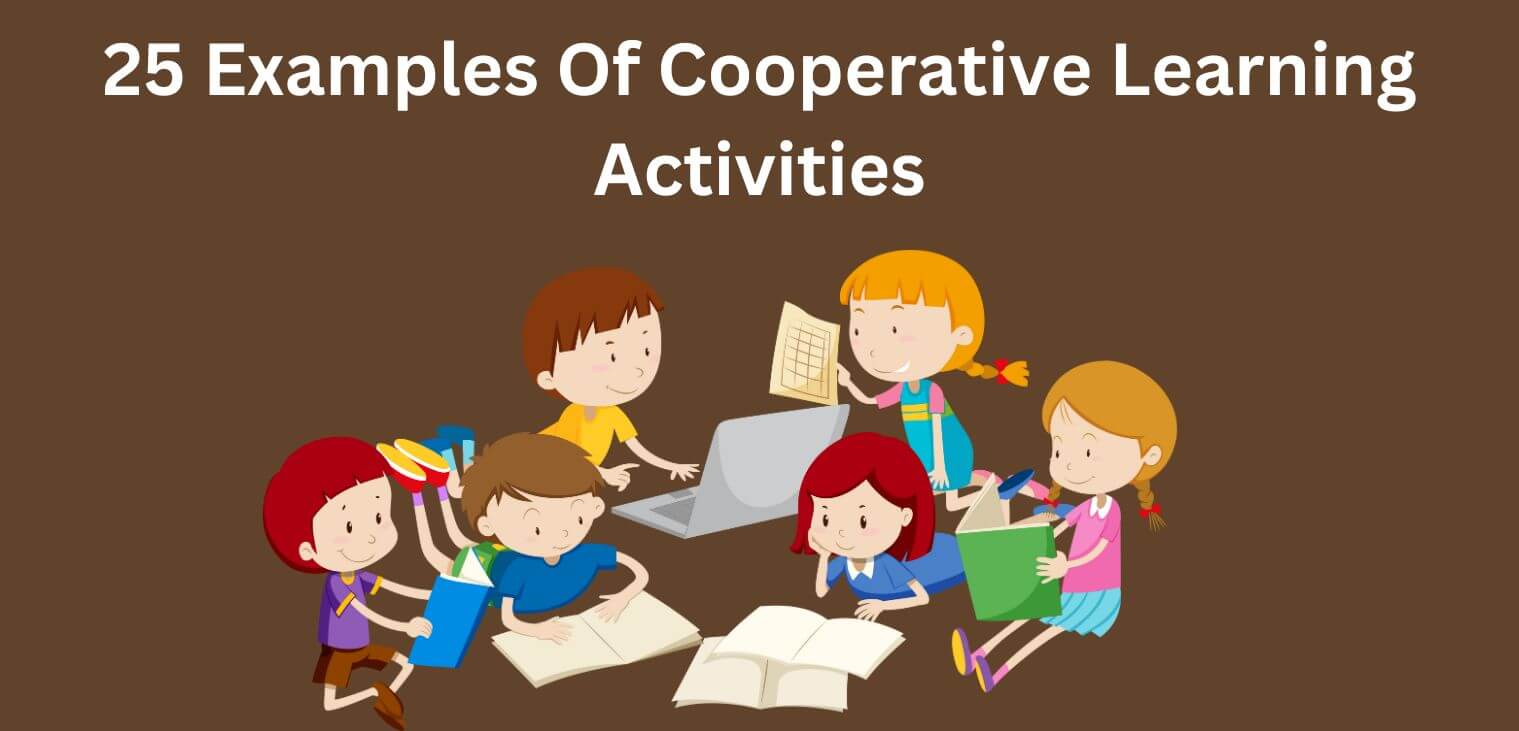
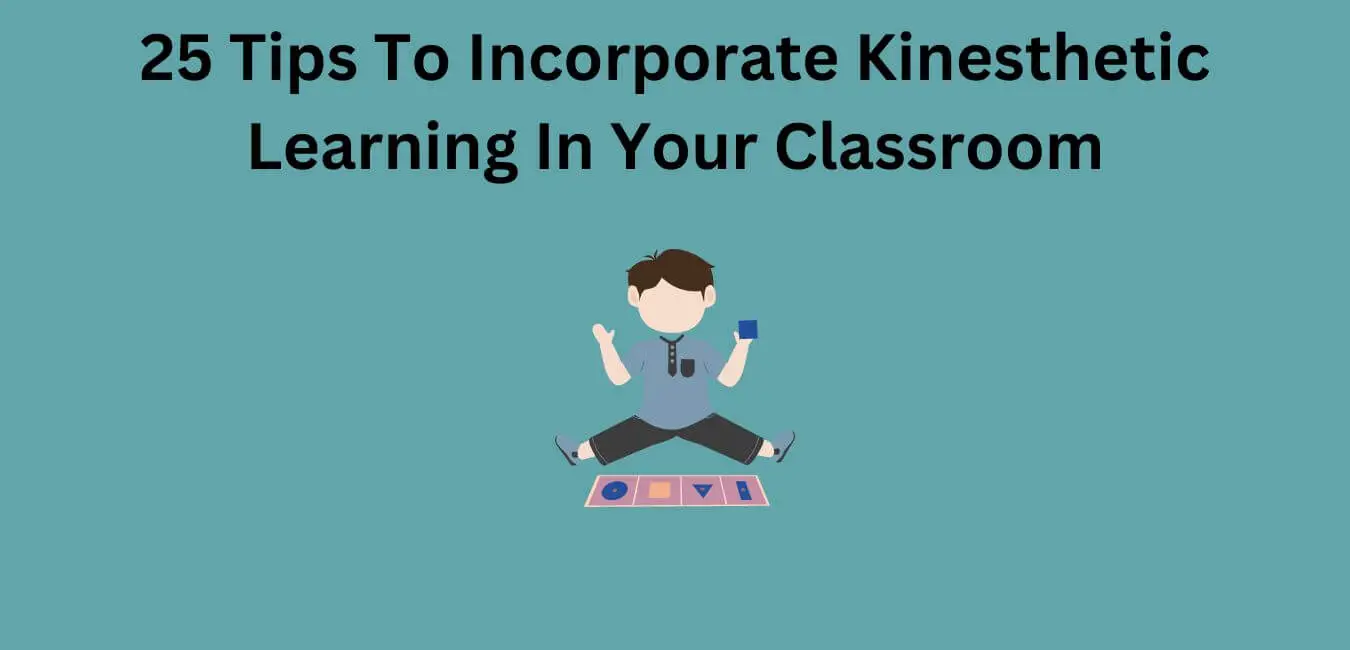
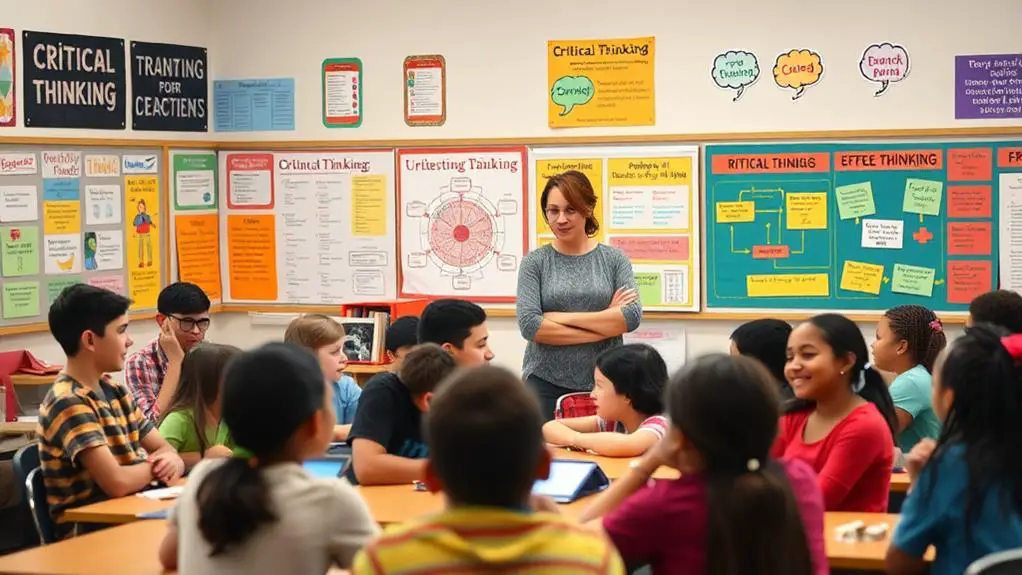
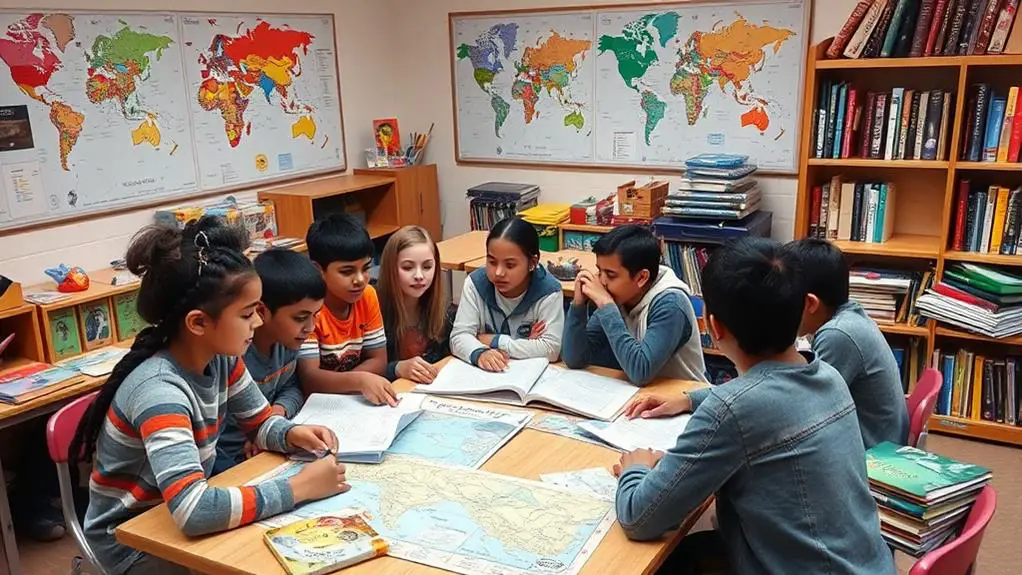
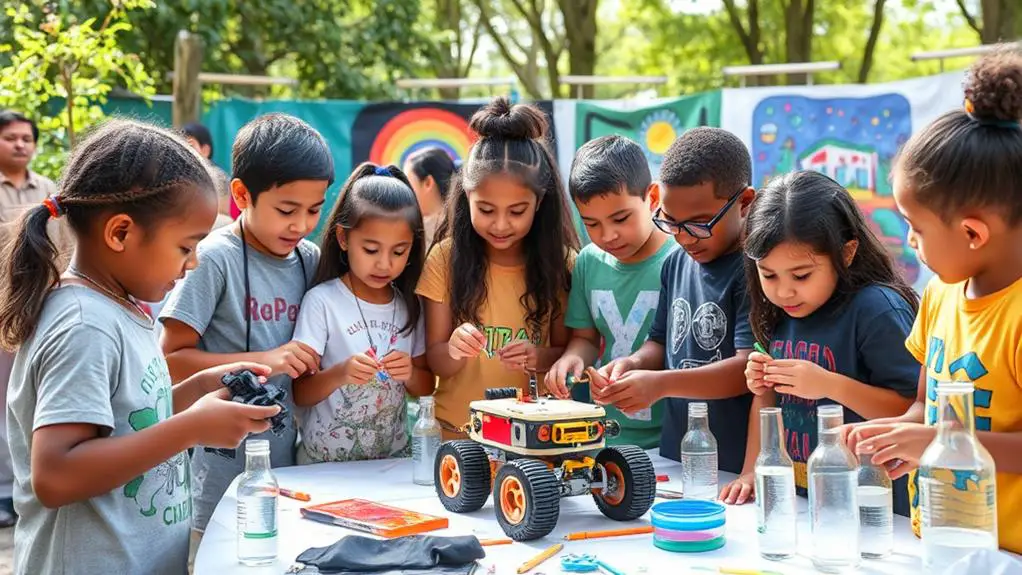
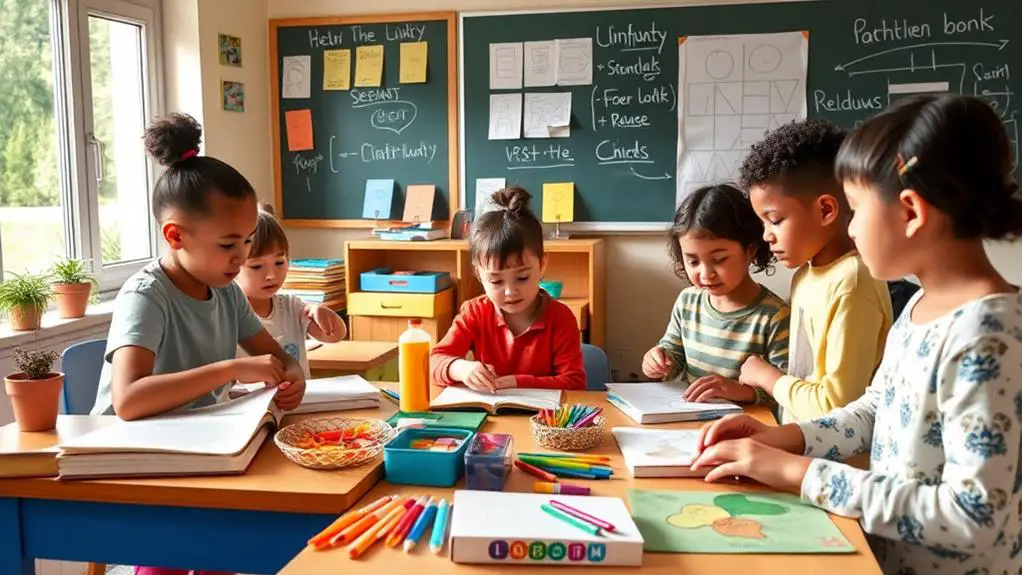
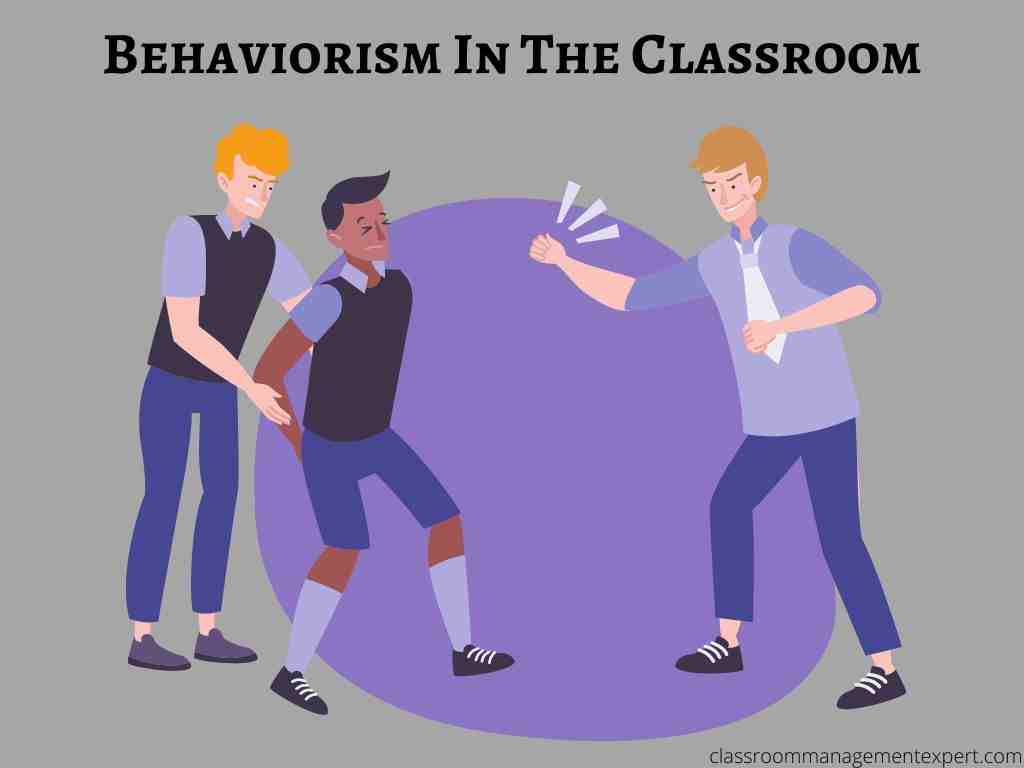
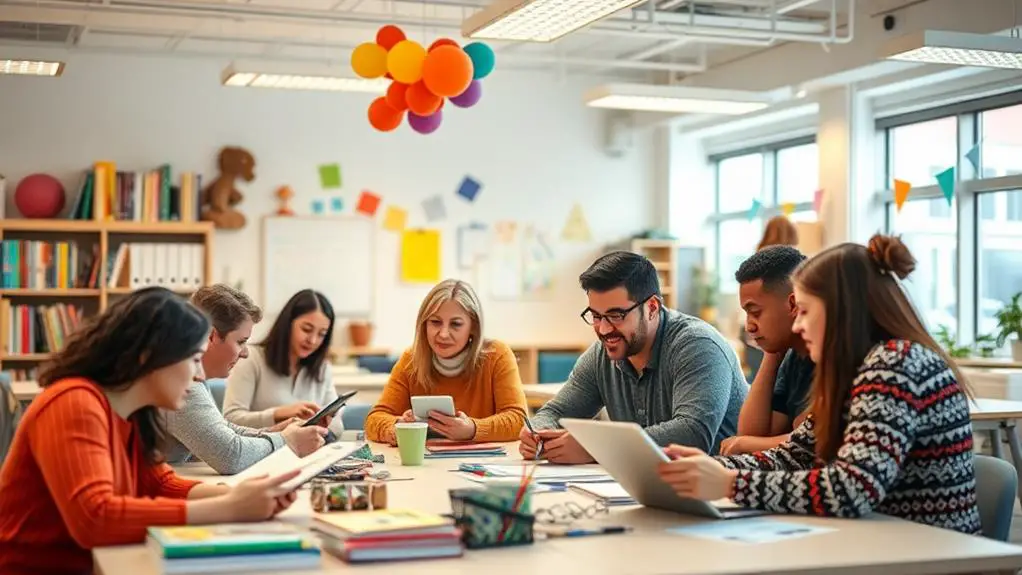



Leave a Reply